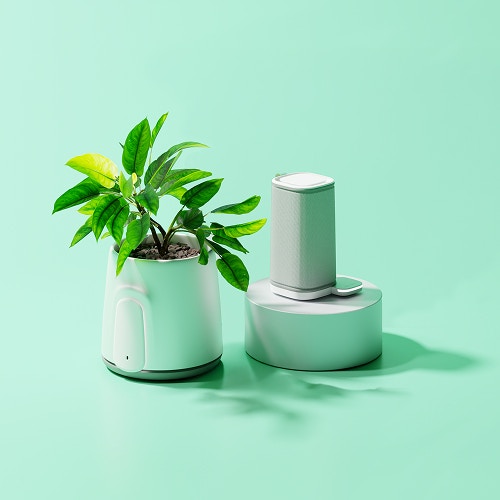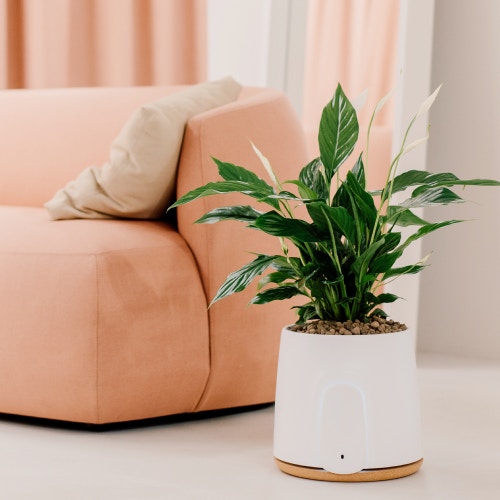
Indoor air pollution is a huge problem for your health - WHO says
→
There is a massive problem that we don’t even notice. At home, at school, at work, and it threatens our health: indoor air pollution.
When you usually think about air pollution, you think about cars, factories, planes’ grey smoke, and other sources from the outside. Well, do you know that air pollution is also inside your home?
Air pollution is a huge problem, but usually, we feel protected from it when we are at home. We spend 90% of our lives indoors, so air pollution can be a real threat for us. Even if you can’t see it.
It may seem that your home is free of pollution as it looks clean. But it isn’t: you can find pollution also in household products and this is just the tip of the iceberg.
Air pollution is also a big problem for your health: World Health Organization has stated that every year “3.8 millions of people die prematurely from illnesses attributable to the household air pollution”. And the worst thing is that only a little part of the population is aware of that.

4 facts about indoor air pollution
1. The air inside our homes, offices, and schools can have up to 5x the pollution and particles than the air outside
According to the Environmental Protection Agency (EPA), the air we breathe inside our homes and offices can be up to 5 times more polluted than the air outside. This is because contained areas enable pollutants to build up more than open spaces do. But unlike secondhand smoke, radon gas and molds which are airborne toxins we cannot readily control, most indoor air pollution comes from products we willingly bring into our home.
2. There are more than 60 sources of household air pollution
Need some examples? Ethylene is contained in air fresheners, cleaning products contain harmful chemicals like alcohol, chlorine, ammonia or petroleum-based solvents, gas kitchen stoves emit nitrogen dioxide. Smoke, paint, carpeting, plastics, cleaning supplies, and other common household items can release harmful pollutants into our indoor air.
3. Indoor air pollution has dramatic effects on our health
Health effects associated with indoor air pollutants include:
- eyes, nose, and throat irritation
- headaches
- dizziness
- respiratory diseases
- heart disease
- cancer
The link between some common indoor air pollutants (e.g., radon, particle pollution, carbon monoxide, Legionella bacterium) and health effects is very well established. In utero exposure to indoor air pollutants has been shown to have health effects which resonate over the entire lifetime, and affects the respiratory and cardiovascular system, endocrine and nervous system.
4. Indoor air quality affects concentration and productivity
EPA researchers are investigating the relationship between indoor air quality and important issues not traditionally thought of as related to health, such as student performance in the classroom and productivity in occupational settings. A study from the Technical University of Denmark by indoor climate scientists Pawel Wargocki and David P. Wyon, from 2013, revealed that the indoor environment can influence work productivity by up to 10%. It has been proven that tasks requiring concentration, memory and original thought are particularly susceptible to poor indoor air quality.
It is possible to improve indoor air quality
There are 3 basic strategies to improve indoor air quality:
- Pollution sources control. Eliminate individual sources of pollution or reduce their emission to improve indoor air quality.
- Improve ventilation. Another approach to lowering the concentrations of indoor air pollutants in your home is to increase the amount of outdoor air coming indoors. This is not possible anywhere, think about living in skyscrapers or urban areas.
- Air purifiers. The effectiveness depends on how well it collects pollutants from indoor air and how much air it draws through the cleaning or filtering element.
Feel indoor air pollution in your home
As air pollution is invisible and has no immediate effects on our health on a very short term, it’s more difficult to perceive the negative impact it could have on the quality of our life and well-being.
- Short-term exposure may lead to coughing, eye-watering, shortness of breath, skin itchiness, and irritation of parts of the respiratory tract.
- Long-term exposure may lead to accelerated aging, stressed heart, infections and the development of diseases such as asthma, bronchitis.
Pollution affects also the way we think, as productivity drops and it may also lead to Alzheimer and dementia. The situation is worrying, isn’t it? But you can take control of your environment. First of all, you need to know the sources of toxic agents
Sources and compounds of indoor air pollution in your home
From the 50’s due to temperature, heating and air conditioning regulation, new buildings have been built to be airtight. Because of this, they trap inside all the dangerous chemicals. Also at home, there are many sources of pollution, some of the most important are: cigarettes, fireplace, kitchen, and furniture. Among the various toxic substances, the most common and dangerous are CO2 and VOCs.
Carbon Dioxide (CO2)
It’s the “exhausted air” that we release it while breathing out. It is also produced by cars, planes and other vehicles. Moreover, it’s considered the principal cause of global warming and Earth Surface Temperature. If you want to know how to reduce your footprint, you can read this article about 6 ways to have a sustainable life.
Volatile Organic Compounds (VOCs)
It’s basically composed of 6 dangerous substances as common as they are dangerous and potentially cancer-causing:
- Ammonia
- Benzene
- Formaldehyde
- Toluene
- Trichloroethylene
- Xylene
To take control of your environment, you need to know how to eliminate indoor air pollution.

Benefits of living without indoor air pollution
There are so many things you can do to live at home healthier, but the most efficient one is to buy a natural air purifier such as Natede, which gets rid of toxic agents thanks to the power of common plants.
As you may have understood, living without toxic agents at home leads to many positive benefits. With Natede you’ll reduce dizziness and headaches together with asthma. Thanks to fresh new air, you will sleep better, relax, and find peace of mind. You’ll find out also more productive! You can monitor your indoor air quality through your app, so you always know that you are breathing fresh air.




